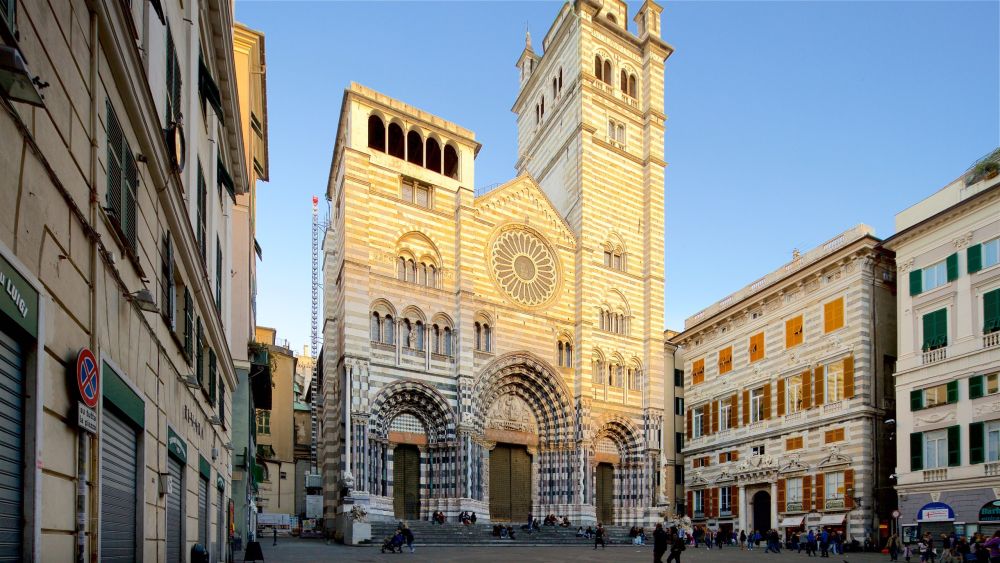

Genoa Cathedral, also known as the Cathedral of San Lorenzo, stands as a remarkable landmark in the heart of Genoa, Italy. Its construction dates back to the 12th century, making it a significant testament to the city's historical and cultural fabric. As one of the primary attractions in Genoa, the cathedral has been a focal point for religious pilgrims, history enthusiasts, and tourists from all over the world.
Genoa Cathedral's origins trace back to between 1098 and 1118, although the site may have had earlier religious significance. Over the centuries, it has undergone multiple renovations and expansions, including the addition of the Gothic façade in the 14th century. The cathedral is dedicated to Saint Lawrence and is notable for housing important relics, such as the ashes of John the Baptist, which has historically made it an important pilgrimage site.
Historically, Genoa Cathedral has drawn visitors interested in its architectural grandeur and the treasures it contains. It served not only as a religious destination but also as a symbol of Genoa's wealth and power, especially during the times when the city was a dominant maritime republic. Tourists were initially few, mainly composed of religious visitors and scholars, but the numbers grew with the rise of cultural tourism in the 18th and 19th centuries.
In the 20th century, efforts to preserve and showcase the cathedral's historical significance increased, launching more systematic approaches to tourism. Post-World War II restoration works, following damage from a British navy bombardment in 1941, were pivotal in preserving the cathedral’s architectural integrity.
Tourism trends in the 21st century have been influenced primarily by the advancement of technology. Virtual reality tours, 3D mapping, and interactive displays have increased accessibility to the history and art of Genoa Cathedral. Further, sustainable tourism practices have become more important, with an emphasis on preserving the cathedral's environment for future generations. With the rise of social media, visually rich sites like Genoa Cathedral have seen a surge in popularity as visitors share their experiences online, further boosting tourism.
Today, locals and tourists alike visit Genoa Cathedral to admire its impressive architecture, which melds Romanesque and Gothic styles, and its famous artworks, including the frescoes by Perin del Vaga in the Chapel of St. John the Baptist. The impact of tourism has been closely managed to ensure that the cathedral remains a place of worship and a vibrant part of Genoa's cultural landscape.
Genoa Cathedral continues to be an essential part of Italy's cultural and historical tourism, offering a window into the past for millions of visitors every year. As a result, the city of Genoa maintains a devout stewardship over this architectural jewel, ensuring its legacy endures for many generations to come.